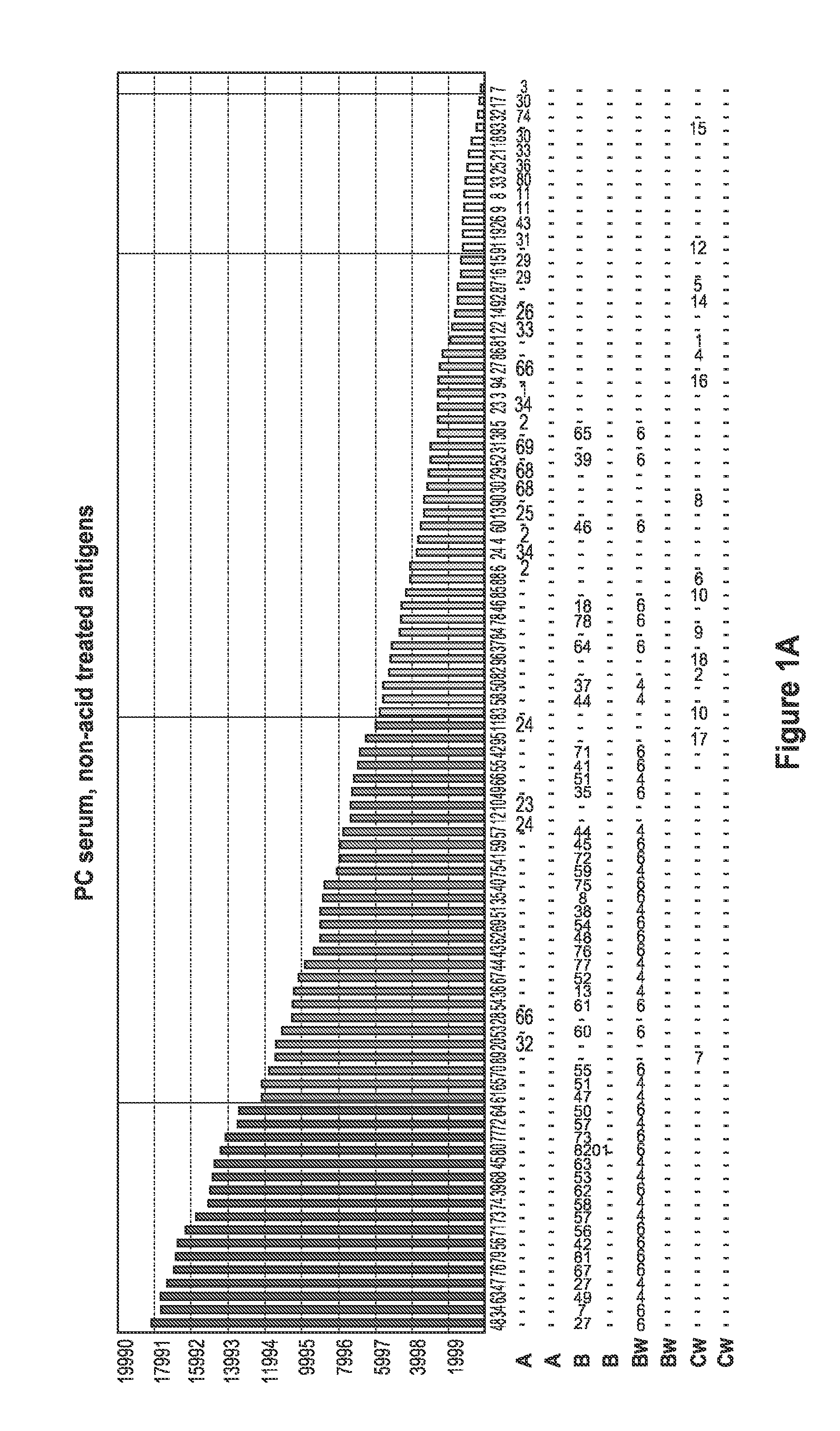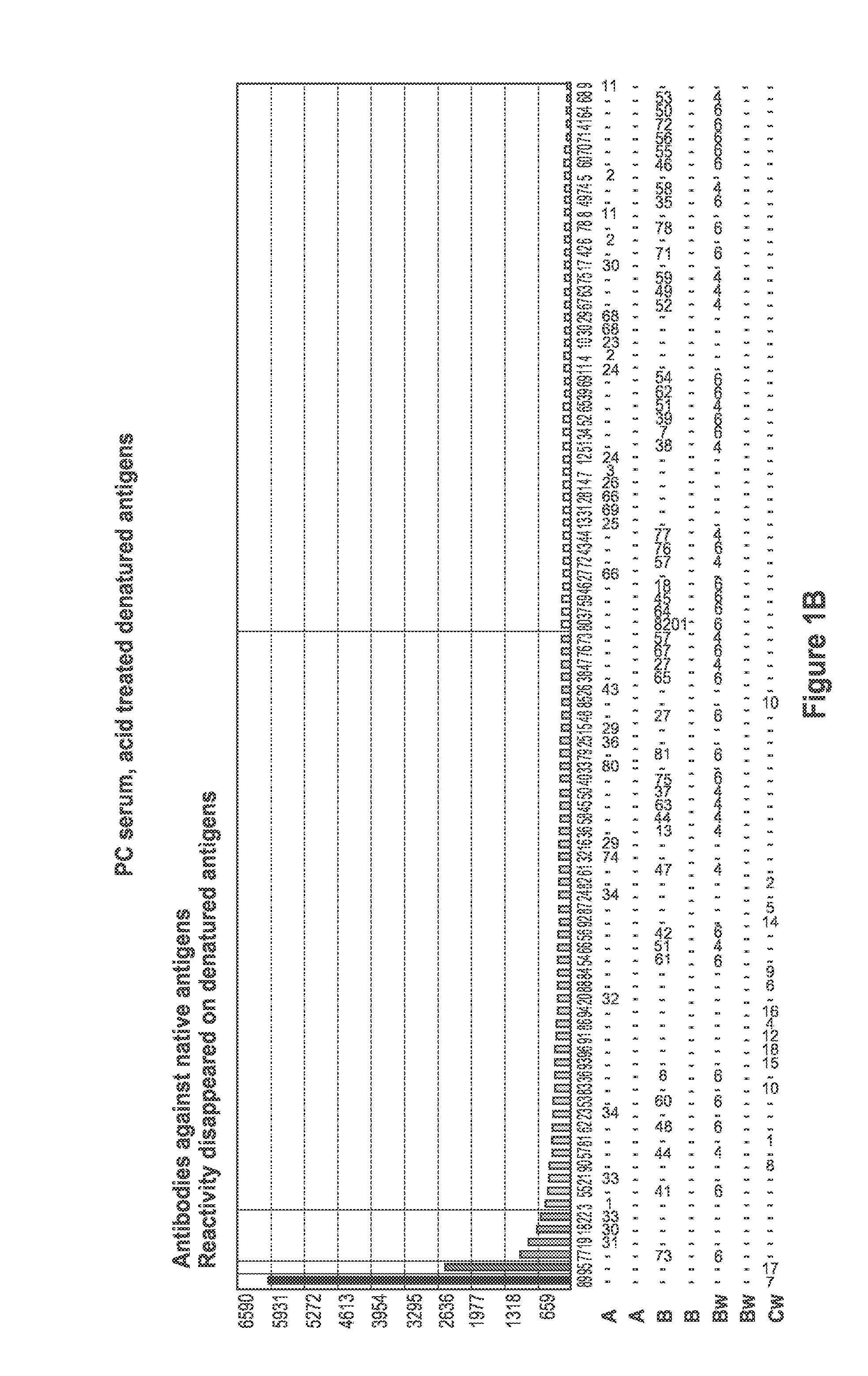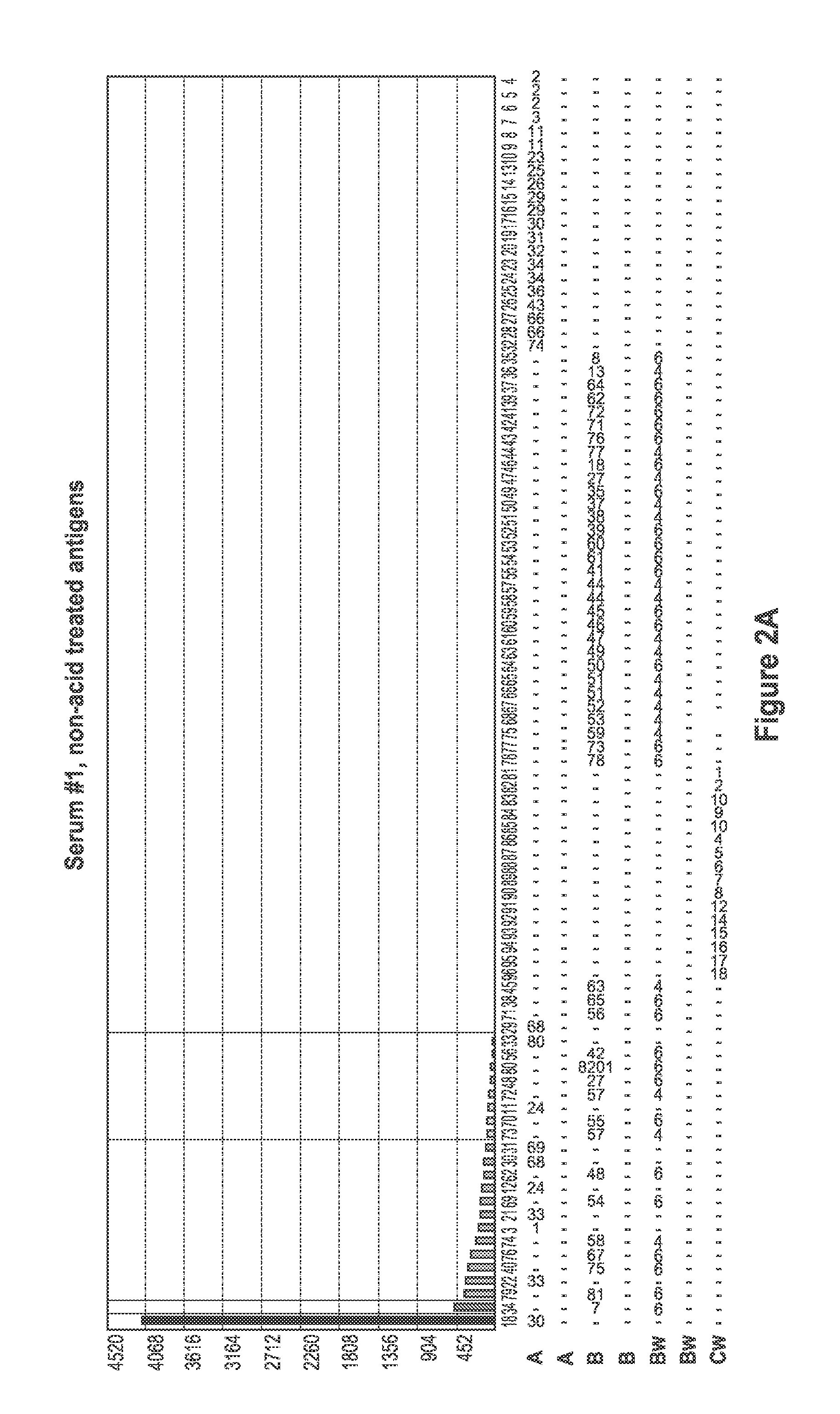Methods of Detecting Antibodies Specific for Denatured HLA Antigens
a technology of hla antibodies and antibodies, applied in the field of detecting antibodies specific for denatured hla antibodies, can solve the problems of increasing the risk of rejection of the transplanted organ, cell-based screening assays are unlikely to detect the presence of antibodies, and the available screening methods do not focus on selective detection of these antibodies
- Summary
- Abstract
- Description
- Claims
- Application Information
AI Technical Summary
Benefits of technology
Problems solved by technology
Method used
Image
Examples
example 1
Method of Denaturing HLA Class I Antigens on Beads
[0087]To investigate the presence of antibodies specific for denatured HLA antigens, beads known to present native HLA antigens were subjected to denaturing conditions. FlowPRA Class I beads (FL1-30, FL1SP, One Lambda Inc.), Flow Single antigen beads (FL1HD, One Lambda Inc.), LABCreen class I PRA (LS1PRA, One Lambda Inc.) or LABCreen Single antigen beads (LS1A01, LS1A02, LS1A03, or LS1A04, One Lambda Inc.) were incubated with a pH 3 buffer containing 0.1 M sodium acetate for 30 minutes at room temperature. The beads were subsequently washed twice with PBS and resuspended in PBS.
[0088]Monoclonal antibodies BIH I (One Lambda, Inc.) and W6 / 32 (ATCC) are known to specifically bind to β2m-associated class I antigens and not denatured HLA antigens. Monoclonal antibodies HC10 (ATCC) or HB-296 (ATCC) are known to specifically bind β2m-free class I antigens (denatured HLA antigens) (Perosa et al., J. Immunol. 171: 1918-1926, 2003).
[0089]To co...
example 2
Separation of β2m-Free (Denatured) and β2m-Associated (Native) HLA Class I Antigens
[0091]It was of interest to develop techniques for separating denatured and native HLA antigens. A panel of untreated HLA antigen-presenting beads was incubated with an antibody specific for native HLA antigens (W6 / 32) and an antibody specific for denatured HLA antigens (HB-296; ATCC). The antigens on the beads were purified from human cell lines, and the beads contain both β2 m+ and β2m-free antigens because β2m may be disassociated from class I HLA antigens in vitro during antigen purification or other manipulation.
[0092]The denatured HLA antigens of the above-identified panel were separated from the native HLA antigens using HC10 affinity column absorption. HC10 is an antibody that is specific for denatured HLA antibodies. Mixture of native and denatured HLA class I antigens were diluted to about 10-50 μg / ml and run through an HC10 affinity column at a flow rate of 0.5 ml / min. The native antigen re...
example 3
Screening HLA Antibodies with Antigen Beads
[0094]Sera samples from patients waiting for kidney transplant were screened for the presence of antibodies specific for denatured HLA antigens using panels of beads which present both native HLA antigens and denatured HLA antigens. Twenty microliters of serum were incubated with 5 μl of each of the antigen beads with or without acid treatment (as described in Example 1) for 30 minutes at 20-25° C. with gentle rotation. The microbeads were washed 3 times with 1 ml wash buffer (One Lambda., Inc.) by centrifugation at 9000 g for 2 minutes and then incubated with 100 FITC or PE-conjugated F(ab)2 fragment of goat anti-human IgG (Jackson ImmunoResearch). The microbeads were then washed twice with 1 ml wash buffer, and then 0.5 ml fixing solution (PBS with 0.5% formaldehyde) was added to the beads. The beads were then analyzed by a flow cytometer or a Luminex machine.
[0095]FIG. 1 depicts a comparison of positive control (PC) serum reaction patter...
PUM
| Property | Measurement | Unit |
|---|---|---|
| pH | aaaaa | aaaaa |
| flow rate | aaaaa | aaaaa |
| pH | aaaaa | aaaaa |
Abstract
Description
Claims
Application Information
 Login to View More
Login to View More - R&D
- Intellectual Property
- Life Sciences
- Materials
- Tech Scout
- Unparalleled Data Quality
- Higher Quality Content
- 60% Fewer Hallucinations
Browse by: Latest US Patents, China's latest patents, Technical Efficacy Thesaurus, Application Domain, Technology Topic, Popular Technical Reports.
© 2025 PatSnap. All rights reserved.Legal|Privacy policy|Modern Slavery Act Transparency Statement|Sitemap|About US| Contact US: help@patsnap.com



